Related Research Articles

In gamma-ray astronomy, gamma-ray bursts (GRBs) are immensely energetic explosions that have been observed in distant galaxies, being the brightest and most extreme explosive events in the entire universe, as NASA describes the bursts as the "most powerful class of explosions in the universe". They are the most energetic and luminous electromagnetic events since the Big Bang. Gamma-ray bursts can last from ten milliseconds to several hours. After the initial flash of gamma rays, an "afterglow" is emitted, which is longer lived and usually emitted at longer wavelengths.
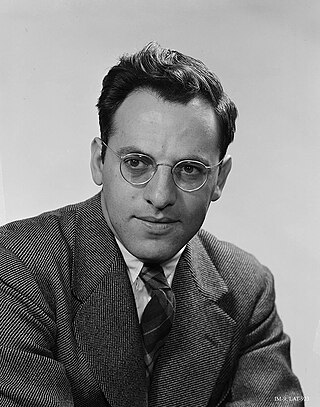
Frederick Reines was an American physicist. He was awarded the 1995 Nobel Prize in Physics for his co-detection of the neutrino with Clyde Cowan in the neutrino experiment. He may be the only scientist in history "so intimately associated with the discovery of an elementary particle and the subsequent thorough investigation of its fundamental properties."

The Fermi Gamma-ray Space Telescope, formerly called the Gamma-ray Large Area Space Telescope (GLAST), is a space observatory being used to perform gamma-ray astronomy observations from low Earth orbit. Its main instrument is the Large Area Telescope (LAT), with which astronomers mostly intend to perform an all-sky survey studying astrophysical and cosmological phenomena such as active galactic nuclei, pulsars, other high-energy sources and dark matter. Another instrument aboard Fermi, the Gamma-ray Burst Monitor, is being used to study gamma-ray bursts and solar flares.
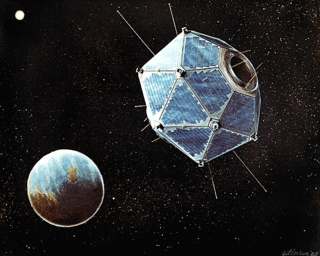
Vela was the name of a group of satellites developed as the Vela Hotel element of Project Vela by the United States to detect nuclear detonations and monitor Soviet Union compliance with the 1963 Partial Test Ban Treaty.
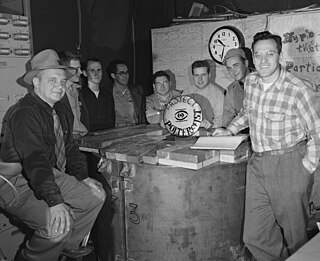
The Cowan–Reines neutrino experiment was conducted by physicists Clyde Cowan and Frederick Reines in 1956. The experiment confirmed the existence of neutrinos. Neutrinos, subatomic particles with no electric charge and very small mass, had been conjectured to be an essential particle in beta decay processes in the 1930s. With neither mass nor charge, such particles appeared to be impossible to detect. The experiment exploited a huge flux of electron antineutrinos emanating from a nearby nuclear reactor and a detector consisting of large tanks of water. Neutrino interactions with the protons of the water were observed, verifying the existence and basic properties of this particle for the first time.

Project Vela was a United States Department of Defense project to monitor Soviet Union compliance with the 1963 Partial Test Ban Treaty. The treaty banned the testing of nuclear weapons in the atmosphere, in outer space, and underwater, but permitted underground testing.
Reuven Ramaty (1937—2001) was a Hungarian astrophysicist who worked for 30 years at NASA's NASA Goddard Space Flight Centre. He was a leader in the fields of solar physics, gamma-ray line spectrometry, nuclear astrophysics, and low-energy cosmic rays. Ramaty was a founding member of NASA's High Energy Solar Spectroscopic Imager which has now been renamed the Reuven Ramaty High Energy Solar Spectroscopic Imager in his honour. This was the first space mission to be named after a NASA scientist and was operational from 2002 until 2018. The Online Archive of California holds over 400 entries for documents, papers and photographs published by and of Ramaty and his work. Ramaty made many contributions in the field of astrophysics and solar physics. He was given the Goddard Lindsay Award in 1980 and had a tribute dedicated to his work at the University of Maryland in 2000.
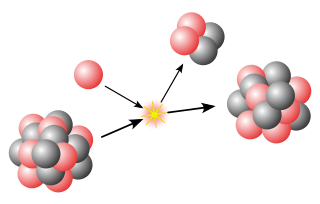
Nuclear astrophysics is an interdisciplinary part of both nuclear physics and astrophysics, involving close collaboration among researchers in various subfields of each of these fields. This includes, notably, nuclear reactions and their rates as they occur in cosmic environments, and modeling of astrophysical objects where these nuclear reactions may occur, but also considerations of cosmic evolution of isotopic and elemental composition (often called chemical evolution). Constraints from observations involve multiple messengers, all across the electromagnetic spectrum (nuclear gamma-rays, X-rays, optical, and radio/sub-mm astronomy), as well as isotopic measurements of solar-system materials such as meteorites and their stardust inclusions, cosmic rays, material deposits on Earth and Moon). Nuclear physics experiments address stability (i.e., lifetimes and masses) for atomic nuclei well beyond the regime of stable nuclides into the realm of radioactive/unstable nuclei, almost to the limits of bound nuclei (the drip lines), and under high density (up to neutron star matter) and high temperature (plasma temperatures up to 109 K). Theories and simulations are essential parts herein, as cosmic nuclear reaction environments cannot be realized, but at best partially approximated by experiments. In general terms, nuclear astrophysics aims to understand the origin of the chemical elements and isotopes, and the role of nuclear energy generation, in cosmic sources such as stars, supernovae, novae, and violent binary-star interactions.
The Dual-Axis Radiographic Hydrodynamic Test Facility (DARHT) is a facility at Los Alamos National Laboratory which is part of the Department of Energy's stockpile stewardship program. It uses two large X-ray machines to record three-dimensional interior images of materials. In most experiments, materials undergo hydrodynamic shock to simulate the implosion process in nuclear bombs and/or the effects of severe hydrodynamic stress. The tests are described as "full-scale mockups of the events that trigger the nuclear detonation". The powerful pulsed X-ray beams allow for an ultra-fast motion picture to be constructed showing the details of the process being studied in three dimensions. The tests are compared with computer simulations to help improve the accuracy of the computer codes. Such testing falls under the category of sub-critical testing.

Stirling Auchincloss Colgate was an American nuclear physicist at the Los Alamos National Laboratory and a professor emeritus of physics at the New Mexico Institute of Mining and Technology from 1965 to 1974, of which he also served its president.

The Lady Godiva device was an unshielded, pulsed nuclear reactor originally situated at the Los Alamos National Laboratory (LANL), near Santa Fe, New Mexico. It was one of a number of criticality devices within Technical Area 18 (TA-18). Specifically, it was used to produce bursts of neutrons and gamma rays for irradiating test samples, and inspired development of Godiva-like reactors.
The history of gamma-ray began with the serendipitous detection of a gamma-ray burst (GRB) on July 2, 1967, by the U.S. Vela satellites. After these satellites detected fifteen other GRBs, Ray Klebesadel of the Los Alamos National Laboratory published the first paper on the subject, Observations of Gamma-Ray Bursts of Cosmic Origin. As more and more research was done on these mysterious events, hundreds of models were developed in an attempt to explain their origins.
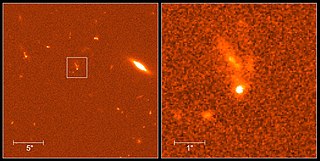
GRB 990123 is a gamma-ray burst which was detected on January 23, 1999. It was the first GRB for which a simultaneous optical flash was detected. Astronomers first managed to obtain a visible-light image of a GRB as it occurred on January 23, 1999, using the ROTSE-I telescope in Los Alamos, New Mexico. The ROTSE-I was operated by a team under Dr. Carl W. Akerlof of the University of Michigan and included members from Los Alamos National Laboratory and Lawrence Livermore National Laboratory. The robotic telescope was fully automated, responding to signals from NASA's BATSE instrument aboard the Compton Gamma Ray Observatory within seconds, without human intervention. In the dark hours of the morning of January 23, 1999, the Compton satellite recorded a gamma-ray burst that lasted for about a minute and a half. There was a peak of gamma and X-ray emission 25 seconds after the event was first detected, followed by a somewhat smaller peak 40 seconds after the beginning of the event. The emission then fizzled out in a series of small peaks over the next 50 seconds, and eight minutes after the event had faded to a hundredth of its maximum brightness. The burst was so strong that it ranked in the top 2% of all bursts detected.
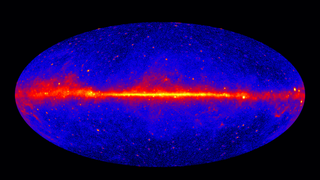
Gamma-ray astronomy is a subfield of astronomy where scientists observe and study celestial objects and phenomena in outer space which emit cosmic electromagnetic radiation in the form of gamma rays, i.e. photons with the highest energies at the very shortest wavelengths. Radiation below 100 keV is classified as X-rays and is the subject of X-ray astronomy.
Fenton Hill Observatory is an astronomical research facility operated by Los Alamos National Laboratory in the Jemez Mountains of New Mexico, about 35 miles (56 km) west of Los Alamos. The site is home to several astronomical experiments and observatories spanning 30 acres (120,000 m2). It is also known as Technical Area 57 (TA-57) and is located at an elevation of 8,700 feet (2,700 m) in a region shielded from light pollution. Los Alamos National Laboratory has a use agreement with the Forest Service for the 30 acres (120,000 m2), which is located near Fenton Lake State Park.

Antimatter comets and antimatter meteoroids are hypothetical comets and meteoroids composed solely of antimatter instead of ordinary matter. Although never actually observed, and unlikely to exist anywhere within the Milky Way, they have been hypothesized to exist, and their existence, on the presumption that hypothesis is correct, has been put forward as one possible explanation for various observed natural phenomena over the years.
David Louis Band or David L. Band was an astronomer who studied the theory of gamma-ray bursts.

The High Altitude Water Cherenkov Experiment or High Altitude Water Cherenkov Observatory is a gamma-ray and cosmic ray observatory located on the flanks of the Sierra Negra volcano in the Mexican state of Puebla at an altitude of 4100 meters, at 18°59′41″N97°18′30.6″W. HAWC is the successor to the Milagro gamma-ray observatory in New Mexico, which was also a gamma-ray observatory based around the principle of detecting gamma-rays indirectly using the water Cherenkov method.
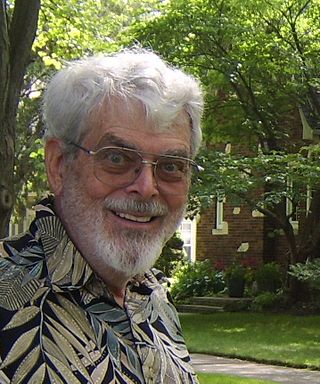
Johndale C. Solem is an American theoretical physicist and Fellow of Los Alamos National Laboratory. Solem has authored or co-authored over 185 technical papers in many different scientific fields. He is known for his work on avoiding comet or asteroid collisions with Earth and on interstellar spacecraft propulsion.
Brenda Lynn Dingus is an American particle astrophysicist at the Los Alamos National Laboratory, known for her research on gamma-ray bursts and cosmic rays.
References
- 1 2 Bonnell, J. T.; Klebesadel, R. W. (1996). "A brief history of the discovery of cosmic gamma-ray bursts". AIP Conference Proceedings. 384: 979. Bibcode:1996AIPC..384..977B. doi:10.1063/1.51630.
- ↑ Klebesadel, Ray W; Strong, Ian B; Olson, Roy A (1973). "Observations of Gamma-Ray Bursts of Cosmic Origin". The Astrophysical Journal. 182: L85. Bibcode:1973ApJ...182L..85K. doi:10.1086/181225.
- ↑ "Cosmic Gamma-Ray Bursts" Strong I.B. and Klebesadel R.W. 1976, Sci. Am. (October Issue, p. 66).
- ↑ LANL Fellows